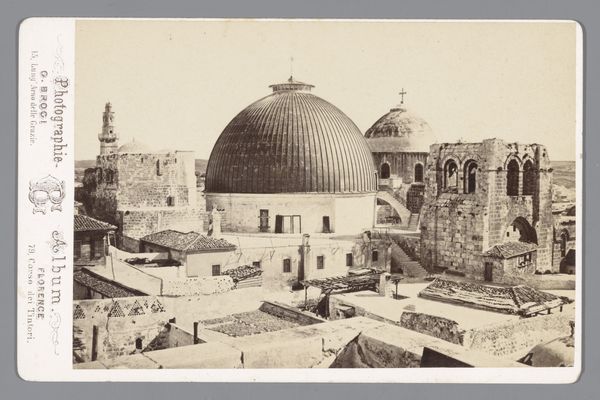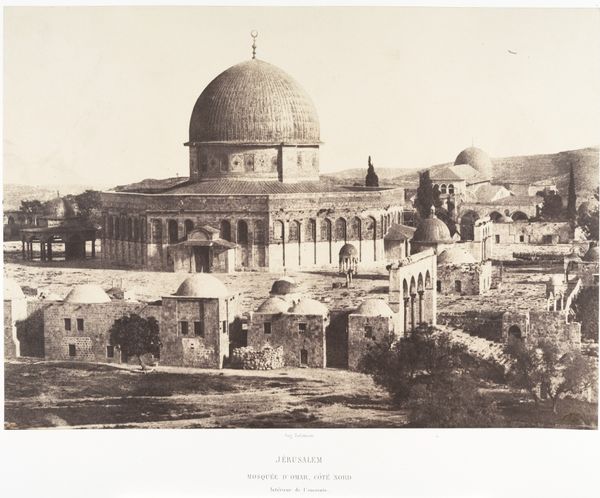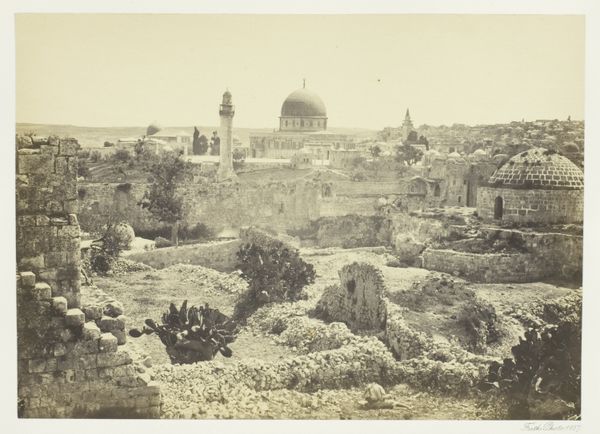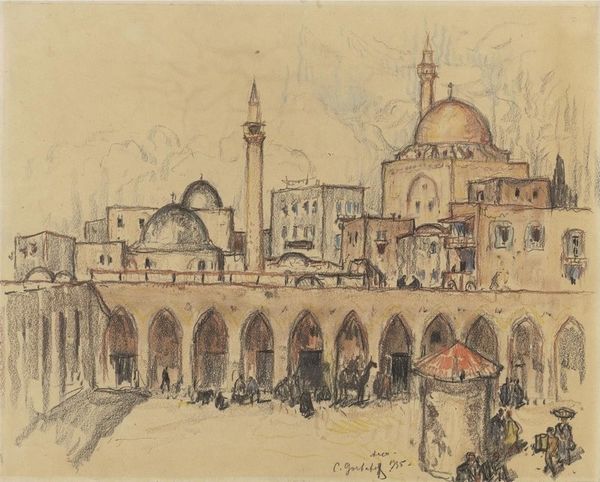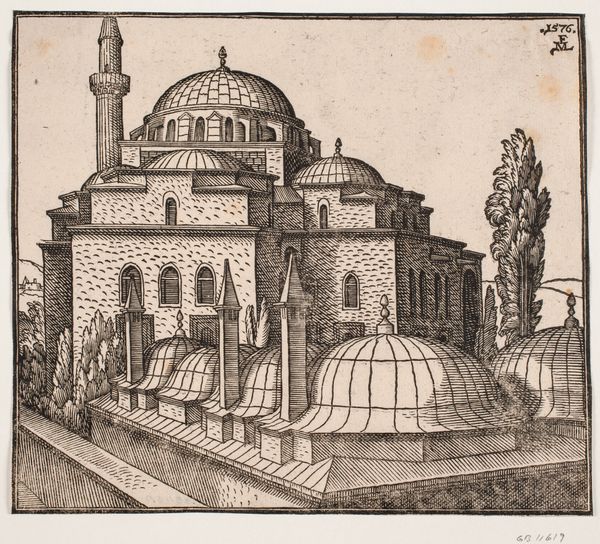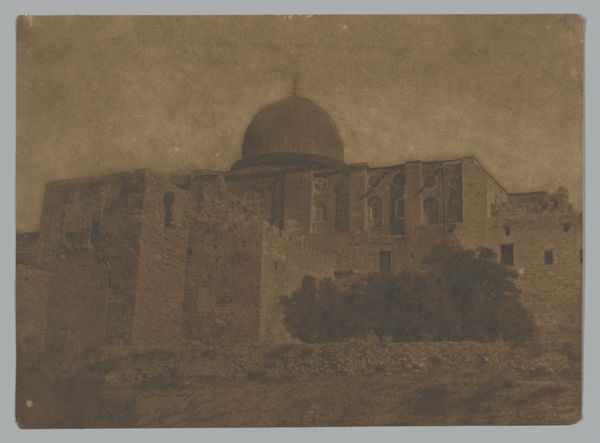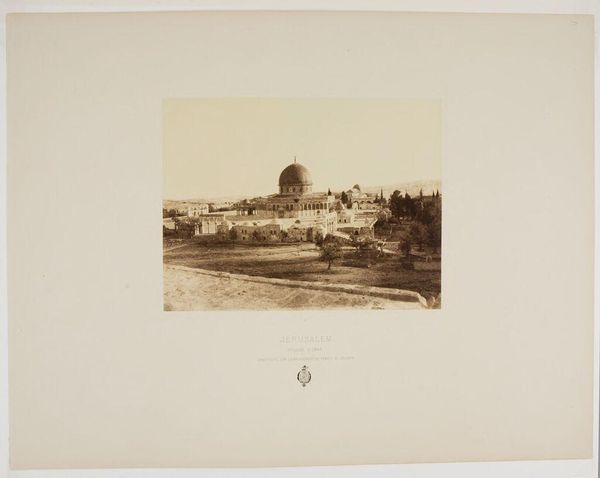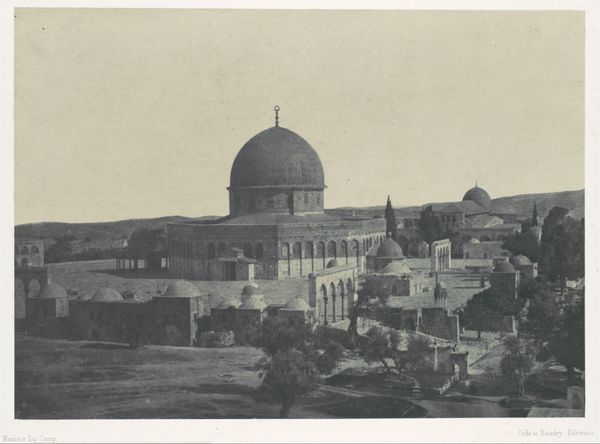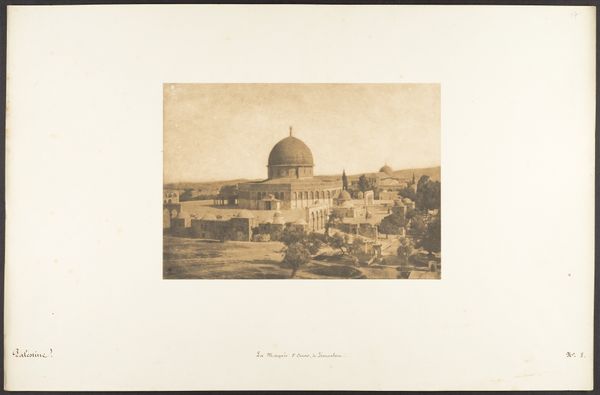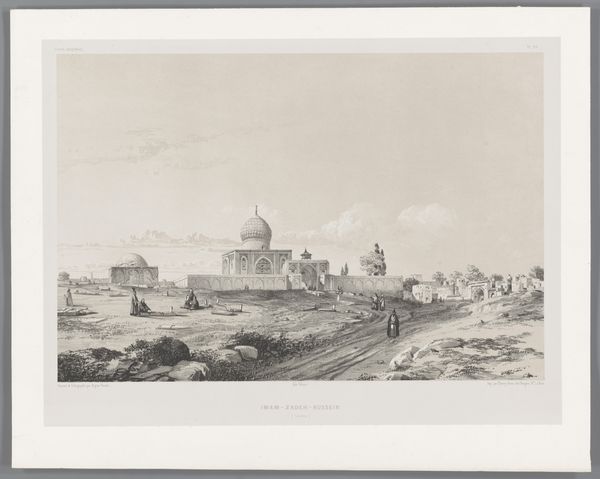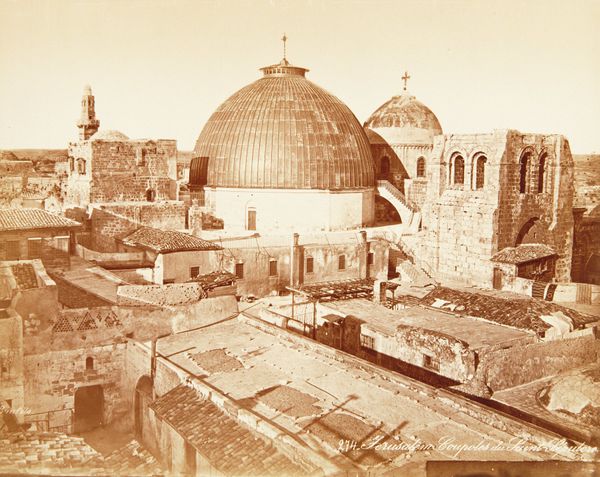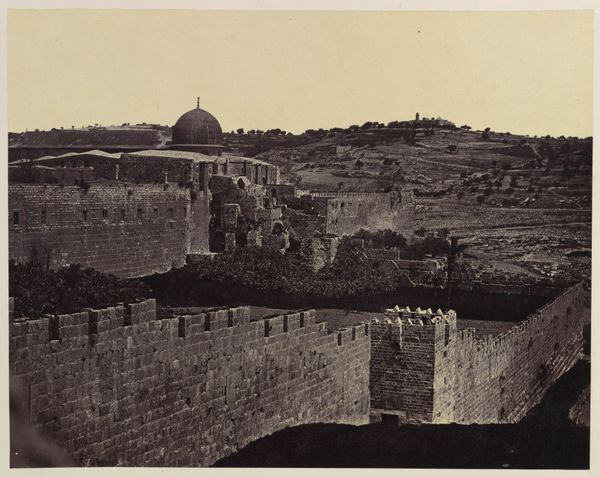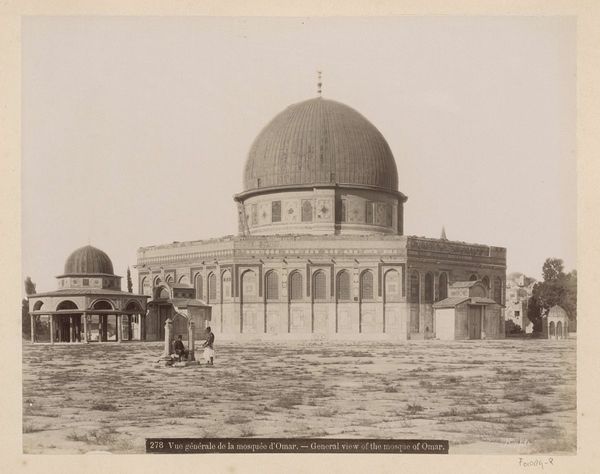
drawing, painting, watercolor
#
drawing
#
16_19th-century
#
painting
#
landscape
#
watercolor
#
german
#
coloured pencil
#
orientalism
#
cityscape
#
watercolor
Copyright: Public Domain
Curator: Welcome. Here we have Fritz Hauck's "Teilansicht von Jerusalem, Blick auf die Omar-Moschee," a watercolor and pencil drawing from 1898. Editor: The piece feels incredibly serene, almost dreamlike. The soft colors and diffuse light create a sense of quiet contemplation, like a faded memory. Curator: Yes, the use of watercolor lends itself well to this atmosphere. Notice how Hauck meticulously builds up the composition. The strong verticals of the minarets and cypress trees punctuate the horizontal sprawl of the city. Editor: It's difficult to ignore the context of this work being a product of Orientalism. Hauck, a German artist, is representing Jerusalem and specifically highlighting the Dome of the Rock, a significant Islamic landmark. What socio-political narratives is he participating in through this gaze? How might local perspectives differ? Curator: An important point. Viewing this piece through the lens of Orientalism raises complex questions about representation. The painting's aesthetic choices are undeniable, and there's a certain precision in the architecture, yet it simplifies and idealizes what is a bustling urban center. The relationship between light and shadow plays an interesting role here, doesn't it? Editor: Absolutely. And this play is selective. Notice that the focus is only on presenting holy places and landmarks from afar; this reinforces a vision where there's no access to people's private life, presenting a romanticised point of view, reducing culture into simplified ideas and expectations. Curator: And how does the absence of human figures play into this romanticism? The scene becomes a stage, a static backdrop against which we project our own interpretations. Editor: Indeed, Hauck’s approach, despite its beauty, cannot be divorced from the historical power dynamics inherent in Western artists depicting the East. Whose stories are amplified and whose are silenced? Curator: A poignant reminder of the responsibilities that come with observation and artistic license. Hauck's skillful rendering of light and form may capture a fleeting moment of beauty, but the deeper cultural narratives remind us of the power art holds. Editor: The act of observing inherently brings about responsibilities in its process. This act becomes the artist's ethical project and, therefore, cannot be ignored, regardless of how romantic the setting seems to be at first glance.
Comments
No comments
Be the first to comment and join the conversation on the ultimate creative platform.
